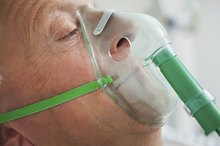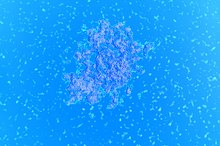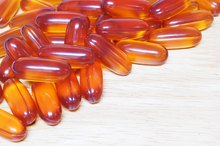What does fact checked mean?
At Healthfully, we strive to deliver objective content that is accurate and up-to-date. Our team periodically reviews articles in order to ensure content quality. The sources cited below consist of evidence from peer-reviewed journals, prominent medical organizations, academic associations, and government data.
The information contained on this site is for informational purposes only, and should not be used as a substitute for the advice of a professional health care provider. Please check with the appropriate physician regarding health questions and concerns. Although we strive to deliver accurate and up-to-date information, no guarantee to that effect is made.
Antibiotics for Balanitis
Balanitis is the infection of the foreskin and head of the penis characterized by soreness, irritation and discharge that can last for 2 to 3 days after intercourse. Balanitis may occur because of infectious and noninfectious causes. Poor hygiene, especially in uncircumcised men and those with reduced immunity, is a major contributing factors. Antibiotics pills and creams may be used to treat balanitis if bacteria or fungi are the suspected causes. Surgery and circumcision may the best options to treat severe cases.
If you are experiencing serious medical symptoms, seek emergency treatment immediately.
Clindamycin
Clindamycin is an antibiotic that belongs to the lincomycin family and is effective against balanitis caused by anaerobic bacteria, which are bacteria that thrive well in the absence of oxygen. Clindamycin acts by slowing and stopping the growth of the bacteria. As per the John Hopkins Point of Care Information Technology Center, 2 percent clindamycin cream should be applied two times daily until the infection is resolved or as prescribed by the physician 1. Common side effects include burning, itching, rash and blisters at the site of infection.
- Clindamycin is an antibiotic that belongs to the lincomycin family and is effective against balanitis caused by anaerobic bacteria, which are bacteria that thrive well in the absence of oxygen.
Mupirocin
Antibiotics to Treat Cystitis
Learn More
Mupirocin is another antibiotic that is available in ointment form and is used to treat balanitis caused by Staphylococcus and Streptococcus species. The affected area of the skin is washed, and a small amount of mupirocin ointment is applied three times a day for 1 to 2 weeks. According to MedlinePlus, mupirocin may cause:
- side effects that include burning
- stinging
- pain
- itching or rash,
- it is important to talk to a doctor if these symptoms do not go away 2
Cephalosporins
Oral administration of cephalosporins, such as cephalexin, is recommended to treat balanitis caused by Staphylococcus or Streptococcus, especially if the infection has spread to other parts of the body. Cephalosporins such as ceftriaxone or cefixime can be used to treat balanitis caused by Niesseria gonorrheae. Cephalosporins are usually administered four times a day for 7 days. Common side effects include nausea, vomiting, diarrhea and upset stomach.
- Oral administration of cephalosporins, such as cephalexin, is recommended to treat balanitis caused by Staphylococcus or Streptococcus, especially if the infection has spread to other parts of the body.
- Cephalosporins such as ceftriaxone or cefixime can be used to treat balanitis caused by Niesseria gonorrheae.
Macrolides
What Are the Treatments for Candida Parapsilosis?
Learn More
Macrolides act by preventing the synthesis of new proteins in the bacterial cell and are usually prescribed for 7 days to be taken two times daily. Macrolides are fairly well tolerated, and common side effects, according to the Mayo Clinic, include diarrhea and abdominal pain.
Azole Family Drugs
Azole family drugs are effective against fungi and are used to treat balanitis caused by fungi such as Candida. Drugs such as clotrimazole, fluconazole and miconazole are available in cream and tablet form and can be prescribed according to the condition of the patient. In fact, an article published in the April 1996 edition of Genitourinary Medicine states that a single dose of fluconazole is equivalent in efficacy and safety to topical clotrimazole cream applied for 7 days 4. Side effects of most azole family drugs include nausea; vomiting; upset stomach; and blisters, itching and redness at the site of application.
- Azole family drugs are effective against fungi and are used to treat balanitis caused by fungi such as Candida.
- In fact, an article published in the April 1996 edition of Genitourinary Medicine states that a single dose of fluconazole is equivalent in efficacy and safety to topical clotrimazole cream applied for 7 days 4.
Related Articles
References
- John Hopkins POC-IT Center: Balanitis
- MedlinePlus: Mupirocin
- MayoClinic.com: Azithromycin (oral route)
- "Genitourinary Medicine"; Comparison of the efficacy and safety of oral fluconazole and topical clotrimazole in patients with candida balanitis.; A Stary, J Soeltz-Szoets, C Ziegler, G R Kinghorn and R B Roy; April 1996
- Morris B, Krieger JN. Balanitis and related inflammatory conditions affecting the penis. In: Bjerklund Johansen TE, Wagenlehner FME, Matsumoto T, Cho YH, Krieger JN, Shoskes D, Naber KG, editors. Urogenital Infections and Inflammations. Duesseldorf: German Medical Science GMS Publishing House; 2017. doi:10.5680/lhuii000027
- Dayal S, Sahu P. Zoon balanitis: A comprehensive review. Indian J Sex Transm Dis AIDS. 2016;37(2):129-138. doi:10.4103/2589-0557.192128
- Rajiah K, Veettil SK, Kumar S, Mathew EM. Study on various types of infections related to balanitis in circumcised or uncircumcised male and its causes, symptoms and management. Afr J Pharm Pharmacol. 2012;6(2):74-83. doi:10.5897/AJPP11.651
Writer Bio
A freelance writer and blogger since 2007, Shamala Pulugurtha's work has appeared in magazines such as the "Guide to Health and Healing" and prominent websites like Brain Blogger and NAMI California. Pulugurtha has a postgraduate degree in medical microbiology from Manipal Academy of Higher Education, India and has completed course work in psychology and health education.









